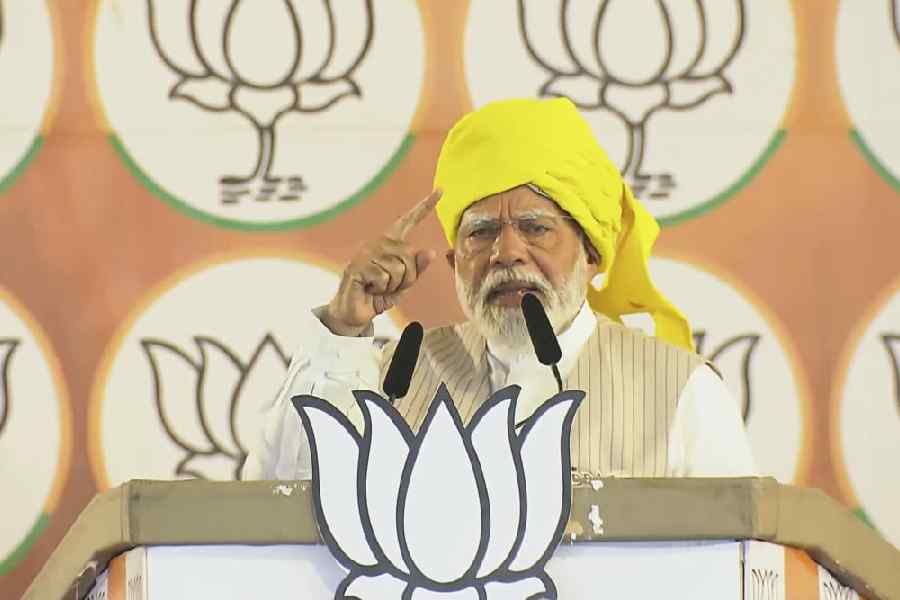Some media reports on the recent Titan tragedy — the deep-sea submersible imploded while journeying towards the remains of the Titanic — described the mishap as a sea-burial. The comparison, while it added to the drama of the tragedy, is incorrect. Sea-burial, the ritual disposal of human remains into the ocean, a custom overwhelmingly associated with ships, has had legal sanction in a number of countries. Historical figures who have been given such a send off include Friedrich Engels, Edwina Mountbatten and also the Bengali revolutionary, Surya Sen.
One such sea-burial had taken place, a little over a hundred years ago, aboard the Ajax, “strong, teak-built and newly sheathed and coppered”, as it journeyed towards China. The body of the deceased was sewn shut inside a hammock by his best-mates, “starting at his feet and working their way up his torso, putting the last stitch through his nose to be sure he was dead.” He seemed to carry the tools of a surgeon or a trader.
But the man was neither a surgeon nor a trader. The dead man was, Andrew Otis tells us in his engaging, if unevenly scholarly, book, Hicky’s Bengal Gazette, a journalist and the founder of, arguably, India’s first newspaper. What James Augustus Hicky did not know, as he was being lowered down into a watery grave, was that his legacy as a journalist would continue to echo on land — India and Bengal — for posterity.
Otis’ account of Hicky’s early life, his anchoring in eighteenth-century Calcutta — with its “[o]pium dens, whore houses, and taverns in dingy lanes,” not to forget the feral bands of dogs and sailors — is engrossing, if not exactly stimulating. But Otis’ real contribution as writer and researcher lies in his illumination of a set of conditions — a veritable continuum — that influence the media, its ethics, as well as its challenges in the institution’s primitive and modern forms.
Consider Hicky’s objective of founding his newspaper: it was a combination of mercenary and philanthropic instincts — “As the first journalist in India, he would have a monopoly over news, and he could expect many subscribers. His richest market would be the Company army. There were hundreds of European officers and thousands of British foot soldiers. His paper would let them… share their experiences and… form [a] camaraderie.” These motives — profit and a semblance of the greater good — have underscored the founding of not just modern media enterprises but also post-media entities, such as social media platforms. In envisioning his newspaper as a platform to cement community bonds, Hicky, it would not be an exaggeration to say, could have well been eighteenth century’s Mark Zuckerberg.
Again, the lay notion of the media being a global entity is thought to be a relatively contemporary phenomenon. Newspapers, in their heyday, had their tentacles spread far and wide. They were succeeded by the even wider reach of television and, now, digital media. Yet, Otis reveals, quite accurately, that the premodern media was, by no means, local: its reach was far wider than it is believed. The coverage of one of Hyder Ali’s campaigns against the East India Company by Hicky’s Bengal Gazette, Otis writes, gained it an international audience, with British and American newspapers, the British Evening Post and the New Jersey Gazette, among others, reprinting the content of Hicky’s newspaper.
Perhaps the most convincing evidence of overlaps between the modern media and its ancestors lies not in motive or reach but in its adversaries: legal instruments weaponised to throttle media freedom. Hicky, plagued by the Church and the State — quite literally — would have felt perfectly at home in New India, whose citizens remain unconcerned about the nation’s precipitous slide, each year, on bona fide registers of press freedom. Hicky’s principal tormentors were the governor-general, Warren Hastings, Johann Zacharias Kiernander, a clergyman, and even the Chief Justice, Elijah Impey. Hicky’s crime? His Bengal Gazette had revealed the Company’s financial underbelly by exposing the faulty awarding of government contracts, nepotism and irregularities, three tenets of crony capitalism that continue to blight India’s economy even today. There are striking convergences between the antiquated and the advanced avatars of the media when it comes to strategies of repression. The circulation of Hicky’s Bengal Gazette was disrupted by official decree, a fate that has befallen many an independent-minded publication in totalitarian States and illiberal democracies. When all else failed, the State could always resort to libel: its equally sinister cousin, sedition, is similarly employed against the press in modern polities.
But there are divergences too, between Hicky’s Bengal Gazette and its modern descendants, that bear scrutiny. The most glaring perhaps is the difference in the realm of ideals and idealism. Eventually, Hicky went on to visualise the Gazette as a public good, to be deployed in the defence of the rights and liberties of all citizens, rulers and ruled, and against the excesses of imperialism, the profiteering of corporations, and the prejudices of the majority. In fact, the transformation of Hicky as a journalist, from a gatherer of news to an opinionated man willing to speak truth to power, is captured poignantly by Otis. This founding ideal of journalism — to be the voice of the people — has long been eroded on account of a number of factors that are not unknown.
Of course, Hicky took licences that would make the modern-day editor/reporter break out in hives. He flirted with the line separating slander and objective reporting; he even — presciently? — distorted facts. His journalistic zeal, interestingly, did not alert him to the need to honour the distinction between advocate and provocateur.
This goes to show that Hicky’s legacy for the modern media is complex. But that should not stop researchers from digging up more on the man and his creation before the surviving “four, near-complete copies of Hicky’s Bengal Gazette” are lost. And why stop at re-interrogating Hicky and his newspaper? There lies an entire archive of the media’s antediluvian forms in the subcontinent and in Asia before the discovery and advent of printing technology — Otis mentions China’s bulletins, Korea’s official newsletters, Japan’s block-printed handprints, the Mughal akhbarat — that could unveil, more than divergences, the fascinating continuities in the triumphs as well as the tribulations of the fourth estate.
uddalak.mukherjee@abp.in










